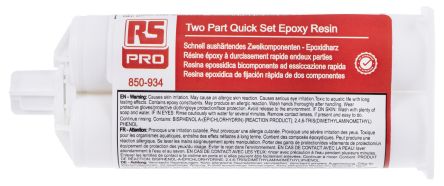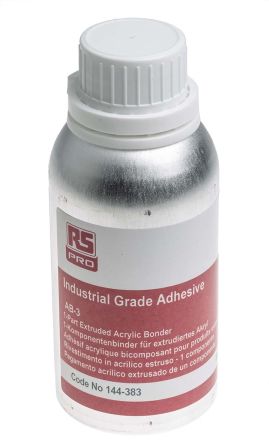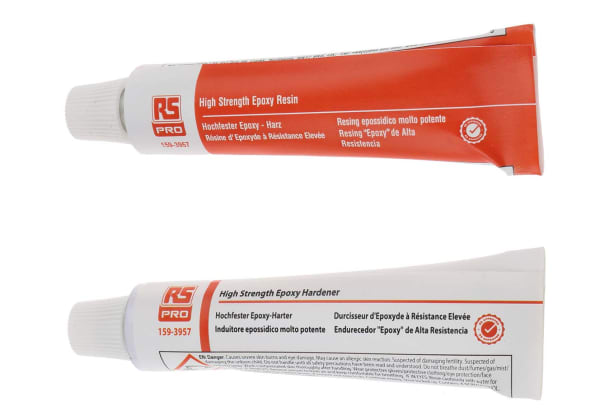- Published 22 Oct 2025
- Last Modified 22 Oct 2025
- 7 min
Electronics Adhesives: Solving Common Bonding & Sealing Issues
Facing electronics bonding issues? Find the right industrial adhesives and sealants, like thermal and conductive glues, for connections.

Are your electronic connections failing to hold together or not conducting enough heat? Electronics adhesives can help resolve that. They’re specially designed to bond electronic components while protecting against vibration, heat build-up, and contaminants. Read on to learn about the different types available and the best applications for them.
Are Your Electronic Components Secure? Common Bonding & Sealing Issues
Here are some of the issues that electronics face due to failed or poorly selected adhesives and seals:
- Vibration and shocks: If electronics experience severe vibration during operation or large shocks during transportation, their delicate components could come loose, significantly harming functionality. Using electronics adhesives meant for these shocks ensures these parts stay together
- Contaminants: Dirt, moisture, and chemicals can harm sensitive electronic components by blocking electrical flow and increasing resistance. Adhesives play a part in repelling these contaminants from component interfaces
- Overheating: Electronics running too hot draw excessive current, damage themselves, and can fail. Choosing adhesives with good thermal conductivity can help dissipate heat
- Short circuits: If electrically conductive adhesives are used in error, they can conduct to adjacent components and cause shorts
- Chemical exposure: If inadequately protected electronics are exposed to solvents, fuel vapours, or other chemicals, they can corrode or oxidise, which damages conductive metals and ruins performance. Chemically resistant adhesives ensure this doesn’t happen between bonded components
- Water: Moisture exposure can short circuits and cause corrosion. Seals and adhesives that can withstand water are essential for preventing this, especially in consumer electronics like mobile phones and wearable tech

The Solution: Selecting the Ideal Adhesive or Sealant
By using adhesives and seals carefully selected for your electronics’ operations, you can unlock these benefits in component sealing and bonding:
- A strong bonding alternative when soldering is impractical for the application
- Delicate components holding together, even under extreme shocks and vibration
- Contaminants kept away from the contacting, conductive surfaces of electronic components
- Corrosion and oxidation prevented at contact points
- Both heat and electricity conducted or insulated to your liking, based on the application
These products also have aesthetic benefits: mobile phones and tablets look slick and simple, partly because they don’t have visible tiny screws holding them together; they rely on concealed electronics adhesives for bonding and sealing.
Not all seals and adhesives are created equally, though. Ensure you consider how the product’s chemical properties, strength, temperature capacity, and thermal and electrical conductivity can handle the joining materials’ properties, operating temperature, expected vibrations, and electrical loads.
Types of Adhesives & Sealants for Specific Electronics Problems
When You Need Strong Bonds: Epoxy Adhesives
Epoxy adhesives are a versatile choice for many electronics applications. They form very strong bonds that can withstand high-stress environments, including elevated temperatures. They bond well to plastics, metals, and ceramics.
These products are two-part adhesives since they require mixing a resin and a hardener at a specific ratio. They then start curing and hardening so they can bond to what they’re applied to. They can get messy, though.
Choose epoxy adhesives for printed circuit board (PCB) repairs, plastic housings, metal surfaces in computers and large electronics, and any high-temperature applications.
Silicone electrical adhesives are known for their superior flexibility, vibration resistance, and sealing capabilities. They’re very insulative, making them good for handling high temperatures and preventing short circuits. These products are a great choice if you need protection from frequent movement and exposure to the elements. They also help sensitive components last long-term.
Choose silicone electronic adhesives for applications like:
- Securing PCB components like capacitors and resistors
- Bonding heat sinks to CPUs
- Sealing wires and cables
- Waterproofing mobile consumer electronics and wearable tech
Their flexibility also makes them usable for repairing device screens.
Encapsulating Sensitive Components: Potting Compounds
Rather than applying sealing and bonding to one component at a time, you can pour adhesive (pouring as into a ‘pot’) over a complete circuit board to encapsulate it in a hard, thick protective coating. The benefits of potting compounds electronics receive include very strong resistance to shock, chemicals, and contaminants, along with high thermal conductivity and electrical insulation.
Although individual potting compounds don’t offer all of those benefits. There are epoxy, silicone, urethane, and acrylic potting compounds available:
- Epoxy: high chemical resistance, adheres to various materials without using primers, and can withstand temperatures up to 400°C
- Silicone: great flexibility with a wide temperature range from −100°C to 200°C
- Urethane: also good flexibility and resistance to elongation and abrasion
- Acrylic: cures very quickly using heat or UV application, and gives good chemical resistance
Solving Heat Transfer Issues: Thermal Adhesives
With a thermal adhesive for electronics, you can create a strong bond while managing heat build-up, which is an issue all electronics need to avoid. Thermal adhesives have a high thermal conductivity, allowing them to dissipate heat to the atmosphere. Since their thermal conductivity is higher than that of air, it’s good to fill them into the component gaps that air would otherwise occupy. That dissipates heat more efficiently.
These adhesives come in liquids, films, and tapes, and there are epoxy, silicone, urethane, and acrylic variants available.
Choose a thermal adhesive for electronics applications like:
- Attaching heat sinks
- Coupling materials with dissimilar coefficients of thermal expansion
- Potting applications, which encase PCBs in a thicker coating and thus need to let heat through that extra thickness
- LEDs
- Batteries and other power supplies
- Home appliances
Ensuring Electrical Contact: Conductive Adhesives
If you need the bonds joining conductive components to also transmit their electricity, look to conductive adhesives. These are tailored to have high electrical conductivity along with strong adhesive strength. This is due to metal or metallic particles added to the base polymers.
Conductive adhesives are a common choice when soldering is impractical, such as with very delicate or thin components. You can also use them to reconnect loose terminals without having to solder. Some of these products even protect against signals that are problematic to electronics like electrostatic discharge (ESD), electromagnetic interference (EMI), and radio frequency interference (RFI).
As with potting and thermal adhesives, conductive ones have epoxy and silicone variants. Electronics with conductive adhesives come up in the medical, aerospace, defence, and automotive industries.
However, you might instead want an adhesive to be electrically insulating to ensure it doesn’t conduct electricity towards adjacent components, thus shorting the circuits. Electronics adhesives exist with those properties too. Choose them if electrically isolating a component is crucial.
Browse our selection of quality thermal adhesives:
Troubleshooting Application: Tips for Reliable Curing & Adhesion
If your electronics adhesives and seals aren’t reliably bonding long-term, consider the following tips for applying them properly:
- Thoroughly clean and dry the contacting surfaces. Advanced techniques like plasma treatment can ‘deep-clean’ the surfaces and lightly oxidise them to roughen them for more successful sticking
- Choose the right adhesive for the job based on the joined materials and their operating conditions
- Ensure you follow the adhesive’s temperature and humidity requirements for application
- Don’t apply the adhesive in excessive thicknesses. If possible, use an attachment that allows fine application of the adhesive
- After application, hold the materials together tightly to ensure you make a strong bond.
- Allow adequate curing time and apply heat or UV light if the adhesive requires it for curing
Choosing the Best Product for Your Assembly Challenge
Given all these variants of electronics adhesives and operating conditions they can face, keep the following in mind when selecting sealing products:
- Conductivities: Do you want the adhesive to insulate or conduct electricity, and how much thermal conductivity do you need?
- Flexibility: Do you need to design for extreme vibrations and shocks?
- Materials: Is this product chemically designed to adhere to the joining materials?
- Safety: What PPE do you need for your hands and lungs when applying this?
- Environment: What ventilation and humidity does this adhesive require for application, and what are the restrictions on its disposal?
Remember to choose adhesives that are actually meant for electronics. There are many varieties of epoxy and silicone adhesives out there, but not all are meant for the thermal and electrical conditions of electronics bonding or the materials to bond to. Finally, perform rigorous testing and quality control to help guarantee the adhesive will work at scale for mass-produced electronics.
We have electronics adhesives to meet all your electrical bonding needs. Browse our full range today.







